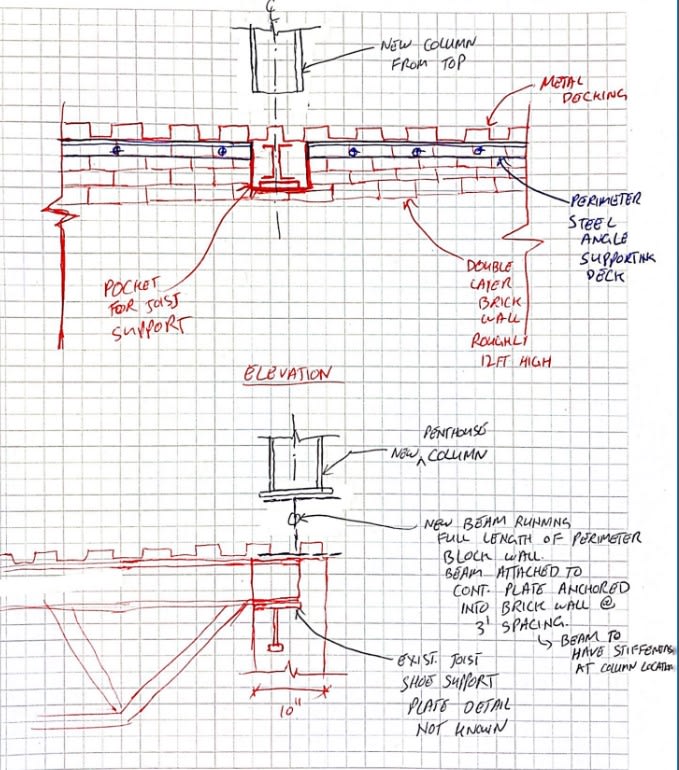Eng_Struct
Structural
- Sep 23, 2022
- 61
Hi All,
I just wanted to get some opinions /ideas on how to best support new penthouse roof column on top of an existing double-layer brick wall. The wall is currently supporting roof joists and the new columns fall direction above the joists spacing based on architectural layout. I am thinking of providing a "sill beam" on top of the wall bridging over the joist support and welding the beam to a wall plate on either side of the column/joists centerline. The wall plate will need to be anchored into the wall. The column will also resist lateral wind load. Any watch-its in this "sill beam" appraoch? I have provide a sketch below for the condition.
Note that the metal deck will need to be trimed back to be able to place the beam on top of the wall. Once the beam is installed, the metal deck will be extended to the web of the sill beam and rest on top of the bottom flange on one side.

I just wanted to get some opinions /ideas on how to best support new penthouse roof column on top of an existing double-layer brick wall. The wall is currently supporting roof joists and the new columns fall direction above the joists spacing based on architectural layout. I am thinking of providing a "sill beam" on top of the wall bridging over the joist support and welding the beam to a wall plate on either side of the column/joists centerline. The wall plate will need to be anchored into the wall. The column will also resist lateral wind load. Any watch-its in this "sill beam" appraoch? I have provide a sketch below for the condition.
Note that the metal deck will need to be trimed back to be able to place the beam on top of the wall. Once the beam is installed, the metal deck will be extended to the web of the sill beam and rest on top of the bottom flange on one side.

